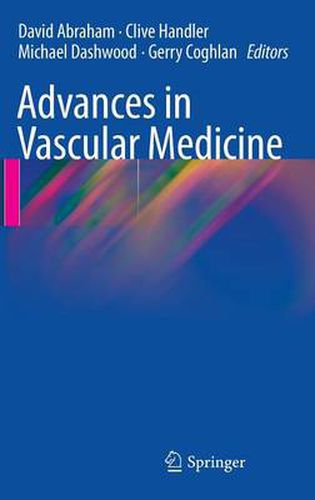Readings Newsletter
Become a Readings Member to make your shopping experience even easier.
Sign in or sign up for free!
You’re not far away from qualifying for FREE standard shipping within Australia
You’ve qualified for FREE standard shipping within Australia
The cart is loading…






This title is printed to order. This book may have been self-published. If so, we cannot guarantee the quality of the content. In the main most books will have gone through the editing process however some may not. We therefore suggest that you be aware of this before ordering this book. If in doubt check either the author or publisher’s details as we are unable to accept any returns unless they are faulty. Please contact us if you have any questions.
Understanding the many complex cellular and molecular mechanisms underlying human vascular diseases is essential in improving the treatment of this important and wide-ranging group of diseases that affect a large proportion of the world po- lation. This book is based on lectures presented at an International Vascular Biology Workshop held in London and chaired by Professor Dame Carol Black. The c- tents are complemented by some invited chapters, all written by world experts in areas of basic science and clinical medicine highly relevant to vascular biology and disease. We are particularly grateful to Professor Arshed Quyyumi, Professor of Medicine and Cardiology at Emory University, who with his research group and clinical colleagues, has provided a substantial contribution to this book. In common with our previous book - Vascular Complications in Human Disease: Mechanisms and Consequences published by Springer in 2008, our aim with this book is to highlight some of the established relationships between basic science and clinical medicine, and to outline new and exciting fields of research and practice in vascular biology and pathobiology. There are two sections: Basic Science of Vascular Biology and Clinical Aspects of Vascular Biology. In the first section, dealing with basic science, we have included three important growth areas: Genetics and Gene Therapy cover approaches to gene therapy and delivery systems, Animal Models to Study Vascular Disease with chapters on animal models of scleroderma, animal models of atherosclerosis, and finally on the endothelin system.
$9.00 standard shipping within Australia
FREE standard shipping within Australia for orders over $100.00
Express & International shipping calculated at checkout
This title is printed to order. This book may have been self-published. If so, we cannot guarantee the quality of the content. In the main most books will have gone through the editing process however some may not. We therefore suggest that you be aware of this before ordering this book. If in doubt check either the author or publisher’s details as we are unable to accept any returns unless they are faulty. Please contact us if you have any questions.
Understanding the many complex cellular and molecular mechanisms underlying human vascular diseases is essential in improving the treatment of this important and wide-ranging group of diseases that affect a large proportion of the world po- lation. This book is based on lectures presented at an International Vascular Biology Workshop held in London and chaired by Professor Dame Carol Black. The c- tents are complemented by some invited chapters, all written by world experts in areas of basic science and clinical medicine highly relevant to vascular biology and disease. We are particularly grateful to Professor Arshed Quyyumi, Professor of Medicine and Cardiology at Emory University, who with his research group and clinical colleagues, has provided a substantial contribution to this book. In common with our previous book - Vascular Complications in Human Disease: Mechanisms and Consequences published by Springer in 2008, our aim with this book is to highlight some of the established relationships between basic science and clinical medicine, and to outline new and exciting fields of research and practice in vascular biology and pathobiology. There are two sections: Basic Science of Vascular Biology and Clinical Aspects of Vascular Biology. In the first section, dealing with basic science, we have included three important growth areas: Genetics and Gene Therapy cover approaches to gene therapy and delivery systems, Animal Models to Study Vascular Disease with chapters on animal models of scleroderma, animal models of atherosclerosis, and finally on the endothelin system.